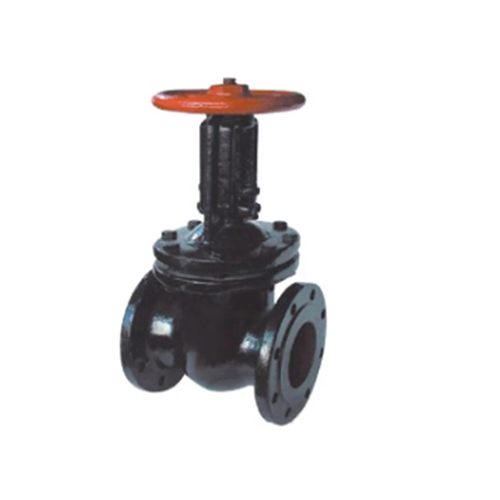
Check Valve Selection for Seawater and Offshore Applications
1. Introduction
Check valves are critical components in piping systems, designed to allow fluid flow in one direction while preventing backflow. In seawater and offshore applications, check valves must withstand harsh environmental conditions, including high salinity, corrosion, extreme pressures, and dynamic loads. Selecting the appropriate check valve is essential to ensure system reliability, safety, and longevity.
This guide provides a comprehensive overview of check valve selection for seawater and offshore applications, covering key considerations such as material selection, valve types, design standards, and operational challenges.
---
2. Key Considerations for Check Valve Selection
2.1. Material Selection
Seawater is highly corrosive due to its salt content, dissolved oxygen, and microbial activity. Therefore, material selection is crucial to prevent premature valve failure.
Common Materials for Seawater Applications:
- Stainless Steel (316, 316L, Super Duplex, 6Mo):
- 316/316L: Good corrosion resistance but may suffer from crevice corrosion in stagnant seawater.
- Super Duplex (UNS S32750/S32760): Excellent resistance to chloride-induced pitting and crevice corrosion.
- 6Mo (UNS S31254): High resistance to localized corrosion in aggressive seawater environments.
- Nickel-Aluminum Bronze (C95800):
- Ideal for seawater due to excellent corrosion resistance and biofouling resistance.
- Titanium (Grade 2, Grade 5):
- Highly resistant to seawater corrosion but expensive. Used in critical offshore applications.
- Non-Metallic Materials (PTFE, PVDF, EPDM):
- Used for seals, seats, and linings to enhance corrosion resistance.
2.2. Valve Types and Their Suitability
Different check valve designs offer varying performance characteristics. The most common types include:
a. Swing Check Valve
- Advantages:
- Low-pressure drop.
- Suitable for large pipe diameters.
- Can handle slurries and debris.
- Disadvantages:
- Slower response time, leading to water hammer risk.
- Requires gravity or flow to close properly.
b. Dual Plate Check Valve (Wafer or Lug Style)
- Advantages:
- Compact and lightweight.
- Fast closing, reducing water hammer.
- Low-pressure drop.
- Disadvantages:
- Limited to clean fluids (may clog with debris).
c. Ball Check Valve
- Advantages:
- Quick response to reverse flow.
- Good for high-pressure applications.
- Disadvantages:
- Higher pressure drop.
- Limited to small-bore applications.
d. Lift Check Valve (Piston or Nozzle Style)
- Advantages:
- Suitable for high-pressure systems.
- Tight sealing.
- Disadvantages:
- Sensitive to debris.
- Higher pressure drop.
e. Tilting Disc Check Valve
- Advantages:
- Fast closing, reducing water hammer.
- Suitable for high-velocity flows.
- Disadvantages:
- More complex design.
2.3. Pressure and Temperature Considerations
- Pressure Rating: Offshore systems often operate under high pressures. Valves must be rated for the maximum expected pressure (e.g., ANSI 150, 300, 600, or higher).
- Temperature Range: Seawater temperatures vary by location. Valves must withstand both cold Arctic conditions and high-temperature process fluids.
2.4. Flow Dynamics and Water Hammer Prevention
- Flow Velocity: High flow rates can cause erosion and cavitation. Valves should be sized correctly to avoid excessive velocities.
- Water Hammer: Sudden valve closure can cause pressure surges. Fast-acting check valves (dual plate, tilting disc) are preferred to mitigate this risk.
2.5. Biofouling and Marine Growth
- Seawater promotes biofouling (barnacles, algae, etc.), which can obstruct valve movement.
- Solutions:
- Use corrosion-resistant materials (e.g., nickel-aluminum bronze).
- Apply anti-fouling coatings.
- Design valves with smooth internal surfaces to minimize attachment points.
2.6. Installation Orientation
- Some check valves (e.g., swing check) require specific orientations (horizontal or vertical).
- Dual plate and ball check valves are more versatile in installation.
---
3. Industry Standards and Certifications
Check valves for offshore and seawater applications must comply with industry standards, including:
- API 594: Covers wafer and lug check valves.
- API 6D: Specifies requirements for pipeline valves.
- ASME B16.34: Pressure-temperature ratings for valves.
- NACE MR0175/MR0103: Standards for sour service (H₂S environments).
- DNV, ABS, and Lloyds Register: Offshore certification requirements.
---
4. Maintenance and Operational Challenges
4.1. Corrosion Prevention
- Cathodic Protection: Used for submerged valves.
- Protective Coatings: Epoxy, zinc, or rubber linings.
4.2. Inspection and Testing
- Regular inspection for leaks, corrosion, and mechanical wear.
- Hydrostatic and pressure testing to ensure integrity.
4.3. Replacement and Repair
- Offshore valve replacement is costly; selecting durable materials reduces downtime.
---
5. Conclusion
Selecting the right check valve for seawater and offshore applications requires careful consideration of materials, valve type, pressure ratings, and environmental factors. Super duplex stainless steel, nickel-aluminum bronze, and titanium are preferred materials due to their corrosion resistance. Dual plate and tilting disc check valves are often the best choices for fast closure and water hammer prevention.
Compliance with industry standards (API, ASME, NACE) ensures reliability and safety. Proper maintenance and corrosion protection strategies further extend valve lifespan in harsh offshore conditions.
By following these guidelines, engineers can optimize check valve selection for seawater and offshore systems, ensuring long-term performance and operational efficiency.
---
This document provides a comprehensive yet concise overview of check valve selection for seawater and offshore applications. If further details on specific valve types or materials are needed, additional research or consultation with valve manufacturers is recommended.
Diese Website verwendet Cookies, um sicherzustellen, dass Sie das beste Erlebnis auf unserer Website erhalten.
Kommentar
(0)